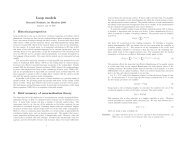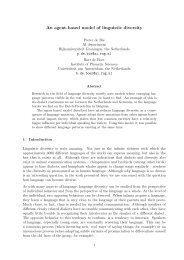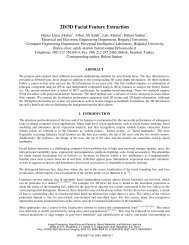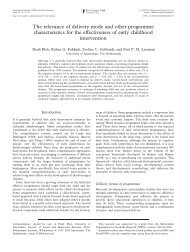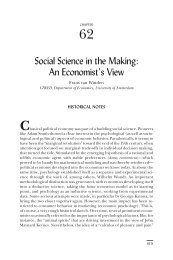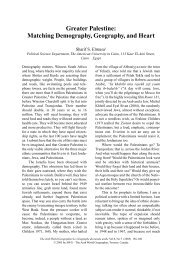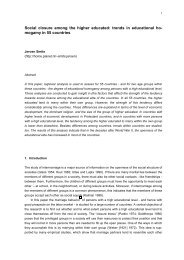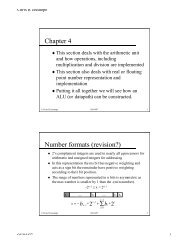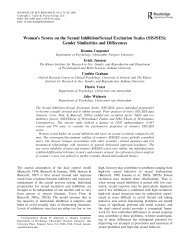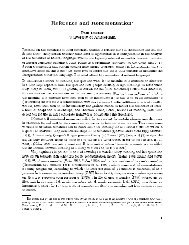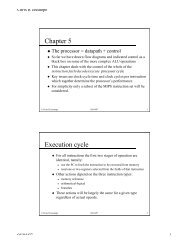Local Bank Financial Constraints and Firm Access to External Finance
Local Bank Financial Constraints and Firm Access to External Finance
Local Bank Financial Constraints and Firm Access to External Finance
You also want an ePaper? Increase the reach of your titles
YUMPU automatically turns print PDFs into web optimized ePapers that Google loves.
III. Data Sources <strong>and</strong> Variable DefinitionsThe data for this paper is obtained from three sources. First, monthly balance sheets <strong>and</strong>earnings reports for all the banks in the Argentine financial system between January 1995 <strong>and</strong>December 2001. Each observation in this database consists of fully detailed financial statementsfor bank i at month t. The descriptive statistics of selected variables from the financialstatements are shown in column 1 of Table I. Government owned banks are excluded form thesample. The average bank held $1.1 billion in assets during the sample period. The crosssectional asset distribution is skewed due <strong>to</strong> the presence of large, foreign owned banks. <strong>Local</strong>banks hold above half of the <strong>to</strong>tal assets in the banking system <strong>and</strong> the average local bank has$0.7 billion in assets (column 2 of Table I).The second source of data is the Public Credit Registry database, or CDSF for its acronym inSpanish. Each observation in this database represents a loan or credit commitment j, issued <strong>to</strong>firm k by bank i at month t. I will use indica<strong>to</strong>rs i, j, k <strong>and</strong> t consistently along the paper <strong>to</strong>indicate bank, loans, firm, <strong>and</strong> months respectively. Both firms <strong>and</strong> banks have unique tax codeidentifiers that allow constructing a panel dataset, <strong>and</strong> also linking the CDSF data with the bankfinancial statements. The CDSF contains monthly data on all firms or individuals with morethan $50 of debt with a financial institution in Argentina. For every loan, the database includesdeb<strong>to</strong>r ID number, the issuing bank ID number, the principal outst<strong>and</strong>ing, the amount <strong>and</strong> typeof collateral posted <strong>and</strong> a code describing the repayment situation. The repayment situationcode ranges from 1 <strong>to</strong> 6, where 1 represents a good st<strong>and</strong>ing loan <strong>and</strong> 5 <strong>and</strong> 6 representdefaulted loans. The categories are precisely defined in terms of the days behind in payment,debt refinancing <strong>and</strong> bankruptcy filings. 1020



